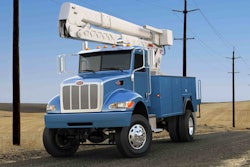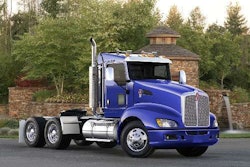Swift thinks lean

At the 2011 Work Truck Show in Indianapolis last month, tried-and-true OEM selling points of “highest horsepower in its class” and “biggest payload capacity” gave way to “lowest cost of ownership” and “lowest cost to maintain.” Equipment specs remain critical considerations, but truck makers certainly know where fleet managers’ minds are today.
As the trucking industry is poised for more prosperous times and soft freight demand and other problems from the recent past give way to a new – albeit more welcome – set of issues (capacity constraints, higher driver pay, etc.), certainly carriers are more sensitive to controlling operating costs coming out of the recession. But carriers that are willing to rethink their organizational processes and procedures stand to gain the most as the economy continues its rebound.
In the years I spent at Randall-Reilly covering the wood products manufacturing industry before coming onboard with CCJ, I marveled at the lean transformations that many companies underwent to stave off competition from Chinese imports and reduce exposure to a volatile housing market. These companies were far more nimble and could react more easily to market conditions than their competitors.
At the Truckload Carriers Association’s 2011 annual convention, I was thrilled to hear a carrier that was applying many of the same lean concepts throughout its operation, as Richard Stocking, president and chief operating officer for Swift Transportation, reviewed the positive effects of his company’s recent reorganization during a fleet panel discussion.
“We became old and stale in our processes and procedures,” says Stocking. “As we grew, we threw people at these problems and issues and didn’t fix the processes along the way. It really caught up to us when things slowed down.”
During the economic downturn, Swift focused on a new vision and a new mission for the entire company. “We found that we were very sloppy and had a lot of waste and wanted to clean that up,” says Stocking. Taking cues from the Toyota Production System and Six Sigma, the Phoenix-based carrier analyzed value streams and began applying lean concepts throughout the organization, from customer contact to cash in the bank.
Out of the reorganization came “The New Swift Way,” a system that focuses on continuous improvement, discipline and trust. A new initiative called Swift University helps employees understand the entire process and what the goals are, and how each employee can affect those goals.
In the new culture, the organization develops “wildly important goals” (WIGs) that everyone from the drivers to founder and CEO Jerry Moyes work toward achieving together. “When we unleashed the talent of our people toward those goals, we found leadership all the way through our company,” says Stocking.
Swift’s transformation and new mission requires total buy-in throughout the organization to be successful. “We have a team purpose and values that we ask everybody to live by, from executives throughout the total organization,” says Stocking. “It doesn’t matter if you’re the best at something. If you can’t live our values, we don’t really need you.”
Stocking says the results of Swift’s reorganization have been amazing. “As you’re able to produce results, then your team feels like they are winning and the whole culture starts to change,” he says. n
Editor’s Note
In this month’s FleetSpeak video interview, Tom Nightingale, chief marketing officer for Con-way Inc., discusses the effects of capacity constraints and regulations on the industry.
Jeff Crissey is Editor of Commercial Carrier Journal.
E-mail [email protected] or call (205) 248-1244.













